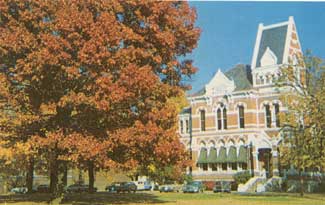Main Content
Article
What are Historic Resources?

Williard Library
Evansville, IN
Photo courtesy of the Williard Library
What makes something historic? Age? Design? Not everything that is old is historic, so how do we decide what is and what isn’t? It really boils down to making a judgment about what is important to our history and culture at a local, state, or national level. A resource that is important to your community but might never appear on a list of nationally significant places, can be historic.
Some resources are important because they are such wonderful examples of architecture or engineering. Others are important for their connection to past people or events. While age is a factor (most historic properties are over 50 years old), it isn’t a hard and fast rule, and some newer places like Cape Canaveral already have proven their importance.
It is easiest to understand “historic” in relation to buildings. But a bridge, a neighborhood, or great piece of sculpture can also be an historic resource. An historic resource might be a site where nothing currently exists but where something important like a Native American village, a factory, or a battle once did exist or take place.
In addition to having importance, historic resources also must have what preservationists like to call “integrity”. That is nothing more than the resource’s ability to convey or “tell” its story. A locally important author’s home that looks much as it did when he or she wrote, can still give us a glimpse into their world. However, if Mount Vernon now were sheathed in stainless steel and tinted glass, it would still be important as George Washington’s home but we would have great difficulty understanding how Washington lived.
A historic resource has something important to tell us about ourselves and our past plus enough qualities to tell that story well.
